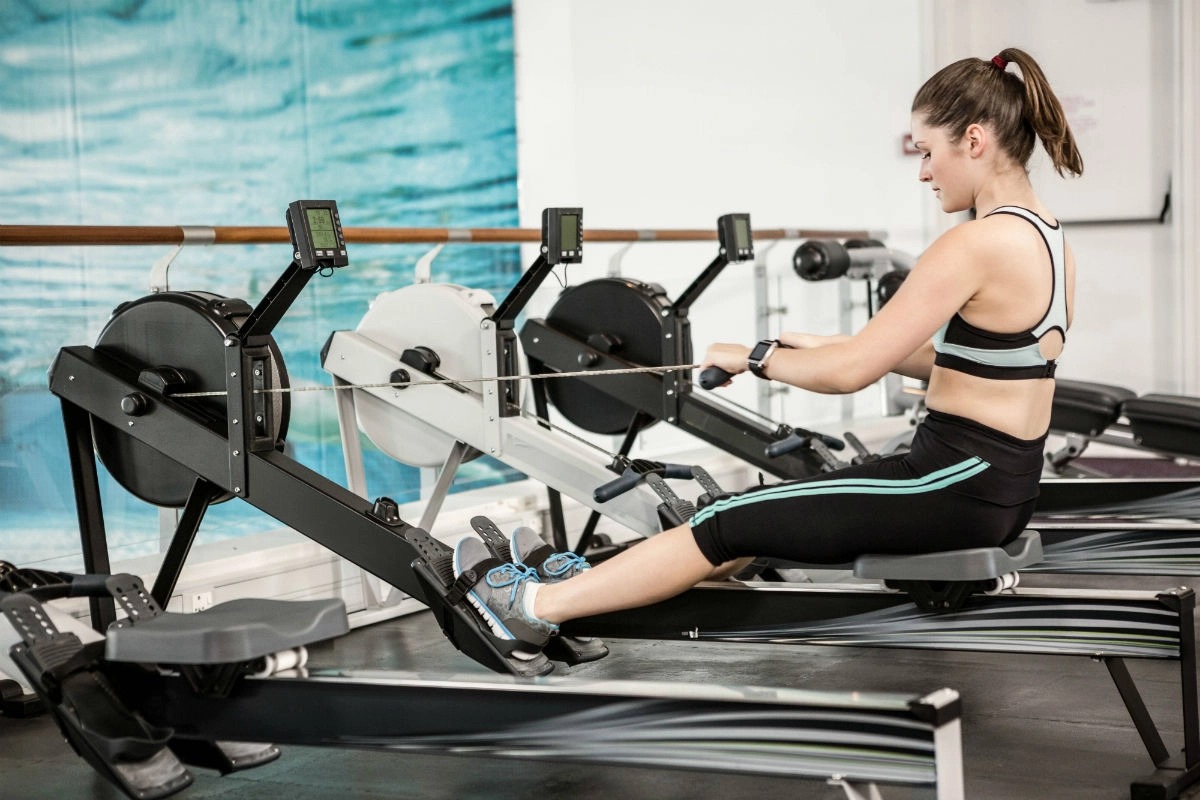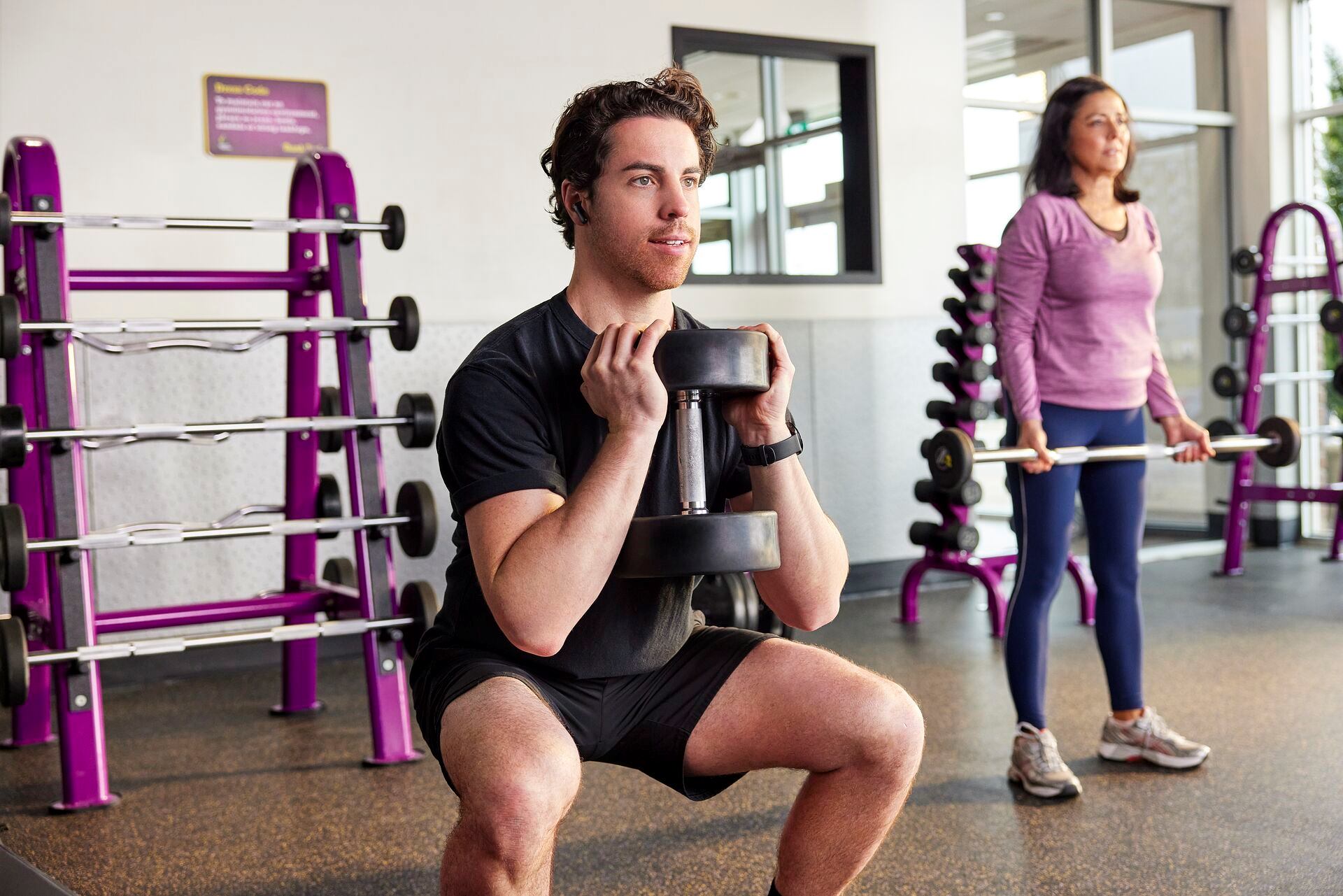Home>Misc>Featured>How Often Should I Do Interval Rowing Training


Featured
How Often Should I Do Interval Rowing Training
Modified: October 3, 2023
Discover the benefits of interval training on a rowing machine. Featured in this guide, learn how often to incorporate interval training into your rowing routine.
Introduction
Interval training has become a popular method of exercise for individuals looking to maximize their workouts and achieve optimal fitness results. This training technique involves alternating between high-intensity exercises and periods of rest or low intensity. By pushing your body to the limit during the intense intervals, you can maximize calorie burn, improve cardiovascular endurance, and build strength and power.
In this article, we will specifically focus on interval training using a rowing machine. Rowing is an excellent cardiovascular exercise that engages multiple muscle groups and provides a full-body workout. Combining rowing with interval training can take your fitness routine to the next level, offering a challenging and effective way to achieve your fitness goals.
But how often should interval training in rowing be done? The frequency of interval training can vary depending on individual goals, fitness level, and overall schedule. In this article, we will explore the factors to consider when determining the frequency of interval training in rowing, as well as provide guidelines and precautions to ensure a safe and effective training routine.
Whether you are a seasoned athlete or just starting your fitness journey, understanding the benefits and recommendations for interval training in rowing can help you optimize your workouts and reach your desired fitness level. So, let’s dive in and explore the world of interval training with the rowing machine!
Definition of Interval Training
Interval training is a structured workout method that involves alternating between periods of high-intensity exercise and short recovery periods. The high-intensity intervals are performed at a maximum effort, pushing your body to its limits. The recovery periods allow for a brief rest or lower intensity exercise to allow your body to recover and prepare for the next intense interval.
This training method is designed to create an optimal balance between cardiovascular conditioning, muscular endurance, and fat burning. It challenges your body by pushing it to work at higher intensities for shorter durations, which can lead to increased calorie burn, improved aerobic capacity, and enhanced overall fitness and performance.
The duration of the intervals can vary depending on your fitness level and goals. Typically, intervals range from 30 seconds to several minutes. The length and intensity of the intervals can be adjusted to suit the individual’s fitness level, ensuring that the workout remains challenging yet manageable.
Interval training can be applied to various forms of exercise, including running, cycling, swimming, and rowing. By incorporating intervals into your workout routine, you can add variety and intensity to your training, preventing boredom and continuously challenging your body for better results.
Overall, interval training is a highly efficient and time-effective way to improve cardiovascular fitness, burn calories, and enhance athletic performance. It offers a versatile approach to exercise that can be tailored to individual needs and fitness levels, making it suitable for beginners and advanced exercisers alike.
Benefits of Interval Training
Interval training offers a wide range of benefits for both physical fitness and overall health. Incorporating this training method into your exercise routine can have a significant impact on your athletic performance and body composition. Here are some key benefits of interval training:
- Increased calorie burn: Interval training is known for its high calorie-burning potential. The intense bursts of exercise elevate your heart rate and metabolism, resulting in increased calorie expenditure during and after the workout. This makes it an effective tool for weight loss and weight management.
- Improved cardiovascular endurance: By pushing your heart and lungs to work at higher intensities, interval training helps improve your cardiovascular fitness. It enhances your heart’s ability to pump blood efficiently, increases lung capacity, and improves oxygen delivery to the working muscles.
- Enhanced fat burning: Interval training is highly effective for fat burning. The intense intervals stimulate the body’s metabolism, leading to greater fat oxidation and post-workout calorie burn.
- Increased aerobic and anaerobic capacity: Interval training targets both aerobic and anaerobic energy systems. The intense intervals challenge the anaerobic system, which improves your ability to sustain high-intensity efforts. Simultaneously, the recovery periods allow for aerobic recovery, enhancing your overall aerobic capacity.
- Time efficiency: One of the significant advantages of interval training is its time-saving nature. With shorter workouts, you can achieve better results compared to longer, steady-state exercises. This makes interval training ideal for individuals with busy schedules.
- Improved muscle tone and strength: Interval training engages multiple muscle groups and requires significant effort from your muscles. Regular interval training can lead to improved muscle tone, strength, and endurance, resulting in a more sculpted and lean physique.
- Enhanced mental toughness: Interval training pushes you outside of your comfort zone, requiring mental strength and focus. By challenging yourself during intense intervals, you can improve your mental resilience, discipline, and determination.
Overall, interval training provides a range of benefits that can help you reach your fitness goals, improve your overall health, and boost your athletic performance. Whether you’re looking to burn fat, increase endurance, or simply add variety to your workouts, interval training is a highly effective tool to incorporate into your exercise routine.
Rowing as an Effective Interval Training Exercise
When it comes to interval training, rowing is an exceptional exercise choice. It is a low-impact, high-intensity workout that engages multiple muscle groups simultaneously, providing a full-body workout that targets the upper body, core, and lower body.
Here are some reasons why rowing is an effective exercise for interval training:
- Full-body engagement: Rowing is a compound exercise that requires coordinated involvement of the legs, core, and upper body. It engages large muscle groups like the quadriceps, hamstrings, glutes, back muscles, and upper body muscles, including the biceps, triceps, and shoulders. This comprehensive engagement of muscles makes rowing highly effective for building strength and burning calories.
- Cardiovascular benefits: Rowing is a highly aerobic exercise that challenges your cardiovascular system. The continuous movement of rowing at a high intensity elevates your heart rate, improving your cardiovascular endurance and lung capacity.
- Low impact on joints: Unlike some other high-intensity exercises, rowing is low impact, which means it puts less stress on your joints. This makes it a suitable option for people with joint issues or those recovering from injuries.
- Enhanced calorie burn: Rowing requires significant energy expenditure due to the combined effort of multiple muscle groups. This results in a high calorie burn during the workout, making rowing an effective exercise for weight management and fat loss.
- Versatile intensity levels: Rowing machines allow you to adjust the resistance and speed, enabling you to customize the intensity of your workouts. This versatility allows you to increase or decrease the intensity based on your fitness level and goals.
- Improved core strength and stability: Rowing requires strong core engagement to maintain proper form and generate power. By regularly incorporating rowing into your interval training routine, you can develop a stronger and more stable core, improving posture and reducing the risk of back pain.
Rowing provides an effective combination of cardiovascular exercise, strength training, and full-body engagement. By incorporating interval training into your rowing workouts, you can maximize the benefits and take your fitness to new heights.
How Often Should Interval Training in Rowing be Done?
The frequency of interval training in rowing can vary based on individual goals, fitness level, and overall schedule. It is essential to find a balance that allows for optimal performance and recovery. Here are the factors to consider when determining how often you should engage in interval training:
- Current fitness level: Beginners or individuals who are new to rowing may need more rest days between interval training sessions to allow their bodies to adapt and recover. On the other hand, experienced rowers may be able to handle more frequent high-intensity workouts.
- Goals: Your specific fitness goals can influence the frequency of interval training. If your primary objective is to increase cardiovascular endurance, you may benefit from incorporating more interval sessions into your weekly routine. If your focus is on muscle strength and conditioning, you may want to balance rowing with other strength training exercises.
- Recovery capability: Adequate recovery is crucial for preventing overtraining and minimizing the risk of injuries. Each individual’s recovery capability varies, and it is important to listen to your body. If you’re feeling excessively fatigued or experiencing prolonged muscle soreness, it may be an indication to reduce the frequency of interval training sessions.
- Schedule: Your schedule and availability for training also play a role in determining how often you should engage in interval training in rowing. It is essential to find a routine that is sustainable and fits well with your other commitments and responsibilities.
Based on these factors, it is generally recommended to incorporate interval training in rowing 2-4 times per week. This frequency allows for adequate training stimulus while providing enough time for recovery and avoiding overtraining. However, it is important to note that individual differences exist, and it may be necessary to adjust the frequency based on personal circumstances and how your body responds to the training.
Remember, quality is just as important as quantity when it comes to interval training. It is better to perform a few high-quality interval training sessions with proper form and intensity than to perform a higher volume of subpar workouts. Always prioritize proper technique and listen to your body to ensure sustainable progress and injury prevention.
Factors to Consider when Determining Frequency of Interval Training
When determining the frequency of interval training in rowing, it is important to consider various factors that can affect your ability to perform and recover from these high-intensity workouts. Understanding these factors can help you optimize your training routine and achieve the desired results. Here are the key factors to consider:
- Individual Fitness Level: Your current fitness level is a significant factor in determining the frequency of interval training. Beginners or individuals who are new to rowing may need more time to adapt and recover. It is advisable to start with fewer interval sessions per week and gradually increase as your fitness level improves.
- Rowing Experience: Experienced rowers who are familiar with the demands of high-intensity workouts may be able to handle a higher frequency of interval training. Their bodies are accustomed to the physical stress and are more efficient in recovery.
- Training Goals: Your specific training goals play a role in determining the frequency of interval training. If your primary objective is to improve cardiovascular endurance, you may benefit from more frequent interval sessions. However, if your focus is on building strength and muscle, it may be important to balance rowing intervals with other forms of resistance training.
- Recovery Capability: Adequate recovery is essential for allowing your body to repair and adapt to the demands of interval training. Factors such as age, sleep quality, nutrition, and stress levels can affect your recovery capability. If you’re experiencing excessive fatigue or prolonged muscle soreness, it may be necessary to reduce the frequency of interval training.
- Overall Schedule: Consider your schedule and availability for training. It is important to find a balance between training and other commitments. Consistency is key, so be realistic about the number of days per week you can commit to interval training in rowing.
- Physical Readiness: Listen to your body and pay attention to any signs of fatigue or overtraining. If you’re feeling excessively tired, lacking motivation, or experiencing ongoing muscle soreness, it may be a sign that you need additional rest and recovery time.
These factors are not exhaustive but provide a starting point to consider when determining the frequency of interval training in rowing. It is important to personalize your training routine based on your unique circumstances and goals to ensure optimal results and minimize the risk of injury or burnout.
Remember, it is always beneficial to consult with a qualified fitness professional who can assess your individual needs and provide personalized guidance based on your specific circumstances.
Guidelines for Frequency of Interval Training in Rowing
When incorporating interval training into your rowing workouts, it is important to follow some guidelines to ensure a safe and effective training routine. These guidelines will help you determine the appropriate frequency of interval training and optimize your results. Here are some key guidelines to consider:
- Start Gradually: If you are new to interval training or rowing, it is important to start gradually. Begin with 1-2 interval sessions per week and assess how your body responds. As you become more comfortable and adapt to the demands of interval training, you can gradually increase the frequency.
- Balance Intensity and Recovery: Strike a balance between intense intervals and adequate recovery. Intense intervals push your body to the limits, so it’s essential to allow enough time for your muscles to recover before the next session. Aim for at least one non-consecutive rest day between interval training days to promote recovery and avoid overtraining.
- Listen to Your Body: Pay attention to any signs of fatigue, excessive soreness, or decreased performance. If you’re feeling overly fatigued or experiencing persistent muscle soreness, it may be an indication that you need additional rest or a lower frequency of interval training sessions.
- Consider Individual Goals: Align the frequency of interval training with your specific goals. If your primary objective is to improve cardiovascular endurance, you may benefit from more frequent interval sessions. If strength and muscle building are your focus, balance rowing intervals with resistance training to avoid excessive fatigue and overuse injuries.
- Assess Progress Regularly: Regularly assess your progress and adjust the frequency of interval training accordingly. As your fitness level improves, you may find that you can handle more frequent interval sessions. On the other hand, if you plateau or experience a decline in performance, it may be necessary to reduce the frequency for better recovery and adaptation.
- Seek Professional Guidance: If you’re unsure about the appropriate frequency of interval training, it’s always beneficial to consult with a qualified fitness professional. They can assess your individual needs, provide personalized advice, and help design a training plan that aligns with your goals and capabilities.
Remember, these guidelines serve as a general framework, but everyone is unique, and individual factors should be considered. It’s important to adjust the frequency of interval training based on your own fitness level, recovery capabilities, and goals. By finding the right balance, you can create an effective and sustainable interval training routine that maximizes your results and promotes long-term success.
Precautions and Tips for Interval Training in Rowing
Interval training in rowing can provide a challenging and effective workout, but it’s important to take certain precautions and follow these tips to ensure safety and maximize your training results. Here are some key precautions and tips to keep in mind:
- Warm Up Properly: Before starting any high-intensity workout, it is crucial to warm up adequately. Spend 5-10 minutes performing some light cardio exercises like jogging or cycling to increase blood flow and prepare your muscles for the upcoming intense intervals.
- Focus on Proper Technique: Technique is vital for safe and effective rowing. Ensure you have proper form and technique before incorporating interval training. Engage your core, maintain a straight posture, and drive through your legs while pulling the handle with your arms. If you’re unsure about your technique, seek guidance from a qualified rowing coach.
- Gradually Increase Intensity: Start with shorter interval durations and lower intensities, especially if you’re new to rowing or interval training. Gradually increase the intensity and duration of your intervals over time as your fitness level improves.
- Listen to Your Body: Pay attention to any signs of discomfort or pain. If you experience sharp or persistent pain, stop the exercise and consult a healthcare professional. It’s essential to prioritize your safety and well-being during your workouts.
- Stay Hydrated: Make sure to hydrate properly before, during, and after your interval training sessions. Drink water to stay properly hydrated and replenish fluids lost through sweat.
- Proper Recovery: Allow your body enough time to recover between interval training sessions. Rest days are essential for muscle repair and adaptation. Incorporate active recovery activities like stretching, foam rolling, or light cardio exercises on rest days, which can help reduce muscle soreness and enhance recovery.
- Progress Gradually: Avoid pushing yourself too hard too soon. Gradually increase the intensity, duration, and frequency of your intervals to give your body time to adapt and reduce the risk of overuse injuries.
- Fuel Your Body: Proper nutrition plays a crucial role in supporting your interval training performance and recovery. Consume a balanced diet that includes carbohydrates for energy and protein for muscle repair.
It’s important to remember that interval training is intense, and it is natural to feel fatigued after a session. However, if you feel excessively fatigued, experience prolonged muscle soreness, or notice a decline in performance, it may be a sign to modify your training or seek professional guidance.
By following these precautions and tips, you can ensure a safe and effective interval training experience in rowing. Remember to listen to your body, prioritize proper form and technique, and gradually progress to achieve your fitness goals while minimizing the risk of injury.
Conclusion
Interval training in rowing can be an incredibly effective way to improve cardiovascular fitness, build strength, and achieve your fitness goals. By incorporating high-intensity intervals with moments of rest or lower intensity, you can maximize calorie burn, enhance endurance, and develop a stronger and more resilient body.
When determining the frequency of interval training, it is essential to consider factors such as your fitness level, goals, recovery capability, and overall schedule. Starting gradually, listening to your body, and balancing intensity with proper recovery are key to enjoying the benefits of interval training while minimizing the risk of overtraining or injury.
Whether you’re a seasoned rower or new to the sport, proper technique is crucial. Make sure to warm up adequately, focus on maintaining a correct rowing form and technique, and gradually increase the intensity and duration of your intervals over time. Hydrate properly, fuel your body with nutritious foods, and prioritize proper recovery to support your performance and overall well-being.
While interval training in rowing can be demanding, it offers a challenging and rewarding workout experience. By incorporating these precautions and tips, you can optimize your training, achieve your fitness goals, and enjoy the many benefits that interval training has to offer.
So, grab a rowing machine, set your intervals, and embark on an exhilarating journey to improve your fitness and take your rowing workouts to the next level!









